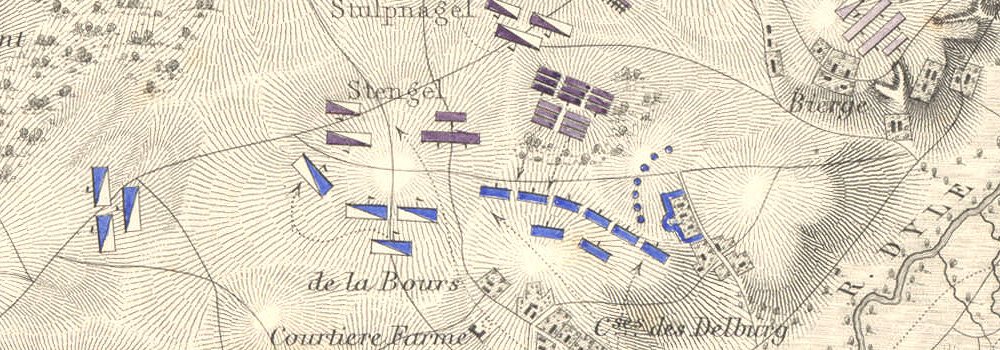General Walmoden fell back with the entire enemy corps, to the left side of the Elb river after having defeated Pecheux in a battle at Gøhtde on the 16th of September. He reoccupied the line at Rhena-Hagenow, where his main force rested and reorganized. Late in September he received several letters from the Swedish Crown Prince asking him to commence offensive operations against Davout's corps (especially the Danes who the Crown Prince believed were positioned along the Trave river). The Swedish Crown Prince wanted Walmoden to throw the Danes back towards Lübeck and Hamburg. But Walmoden who considered a frontal assault pointless and to risky stalled for more time. But when he received new letters from Sweden (on the 1st and 2nd of October) threatening the withdrawal of the Swedish troops from his command, he was forced into action. The General Walmoden decided to attack the bridgehead at Ratzeburg-Mölln. On the eve of the 4th of October the forces were as follows:
In the 1st line were colonel Müllers with the Swedish-Mecklenburgske flank guard in Schönberg. The Hanseatiske brigade Witzleben were at Roggendorf. Lützows Freikorps (commanded by Petersdorff) and the 2nd Cossack regiment Grebzow were at Zarrentin. Cavalry division Dörnberg were stationed at Kamin. The remainder of Tettenborns vanguard were at Zarensdorf. A small flank guard were under Kielmansegge at Dömitz.
The 2nd line compromised the main force of Vegesacks division near Rhena. The Russian-Prussian and the British-Prussian legions and the reserve cavalry at Melkhof.
Walmoden marched a force south of Schall lake while Vegesack's division were ordered to occupy the gap between Röggelin and lake Schall. These movements on the 6th of October resulted in fierce skirmishing at Gross Molzahn, Mustin and Büchen.
The Swedish flank-guard led by Müller (Mecklenburgske jaeger regiment, the Swedish infantry battalion Norman, 2 squadrons of Schillske hussars and 2 Mecklenburgske cannons) encountered a French force between Gross Molzahn and Schlagrosdorf. The French force compromised 3 battalions of infantry, 3 voltigeur companies, 2 squadrons chasseurs á cheval and 1 horse battery, the entire French force was commanded by General Romme. The general had been ordered to advance and thereby gain information about the movements of division Vegesacks. Müllers troops were left to their own devices by Walmoden and were totally routed by the French. A part of the force fled to Dechow while the rest retreated towards Schönbreg. Quite a few prisoners were taken by the French (especially from the Mecklenburg jaegers, who only escaped total destruction due to the fact that their uniforms looked similar to the ones worn by the French chasseurs á cheval).
Colonel Witzleben occupied Lüneberger Berg, where he skirmished briefly with French troops. He had no desire to engage the enemy with his full strength, so after a brief skirmish Colonel Witzleben quickly went on the defensive.
Dörnberg were given command of the Wardenburg Infantry brigade (Russian-Prussian legion), the light infantry brigade Martin from the British-Prussian legion and the 2nd Russian-Prussian hussar regiment von Dohna along with the horse battery Symper from the British-Prussian artillery brigade. General Dörnberg attacked towards Büchen, which his vanguard (volunteers from brigade Martin) which he reached at dawn on the 6th of October. His advance were stopped by fire from 2 redoubts on the western shore of the Delvenau. The redoubts were occupied by 2 guns each and a company of voltigeurs from the 80th French line regiment. A fierce fire fight evolved as the Brigade Martin deployed for battle supported by battery Symper. The French forces fought valiantly and despite the overwhelming enemy firepower they fought on. General Dörnberg abandoned his plan to cross the river due to the fierce French. Instead he fell back to Gresse and reorganised. He had lost 7 officers and 56 other ranks. The French troops lost 8 dead and 24 wounded voltigeurs.
The fighting continued the next day. At Weisser Hirsch.
